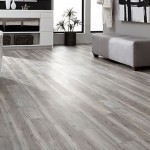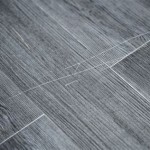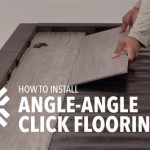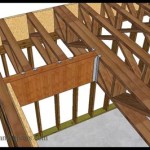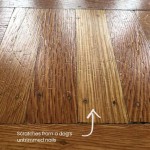Waterproof Kitchen Flooring Ideas: A Comprehensive Guide
The kitchen, often considered the heart of the home, is a space subjected to a significant amount of wear and tear. From spilled liquids and dropped food to constant foot traffic, the demands placed on kitchen flooring are considerable. Choosing a waterproof flooring option is paramount to ensuring the longevity and aesthetic appeal of this vital area. This article explores a range of waterproof kitchen flooring ideas, highlighting their benefits, drawbacks, and suitability for various kitchen designs and budgets.
Understanding Waterproof vs. Water-Resistant Flooring
Before delving into specific flooring types, it's crucial to differentiate between waterproof and water-resistant materials. Water-resistant flooring can withstand moisture to a certain extent, often through a surface coating or inherent material properties. However, prolonged exposure to water can lead to damage such as warping, staining, or mold growth. Waterproof flooring, on the other hand, is completely impervious to water penetration. This makes it ideal for areas prone to frequent spills and moisture, such as the kitchen and bathroom.
The distinction lies primarily in the core construction of the flooring. Waterproof options typically feature a solid core that doesn't absorb water, even when submerged. This core is often combined with a wear layer that provides scratch and stain resistance and a decorative layer that mimics the appearance of wood, stone, or tile. Water-resistant flooring, while offering some protection, may have a core that is susceptible to water damage over time.
Popular Waterproof Kitchen Flooring Options
Several materials have emerged as popular choices for waterproof kitchen flooring, each offering a unique blend of aesthetics, durability, and cost-effectiveness.
Luxury Vinyl Flooring (LVF): Luxury Vinyl Flooring, including both planks (LVP) and tiles (LVT), has gained immense popularity in recent years due to its exceptional waterproof qualities and realistic appearance. LVF is constructed with multiple layers, including a waterproof core, a decorative layer that can mimic natural materials like wood or stone, and a durable wear layer that protects against scratches and stains.
LVF is available in a wide range of styles, colors, and textures, allowing homeowners to achieve the desired aesthetic without the maintenance concerns associated with natural materials. It is also relatively easy to install, with many options featuring click-lock systems that make it a suitable DIY project. Furthermore, LVF is typically more affordable than natural stone or hardwood, making it an attractive option for budget-conscious homeowners.
Sheet Vinyl: Sheet vinyl is a continuous, seamless flooring option that offers excellent waterproof protection. It is typically installed in a single sheet, eliminating seams where water can penetrate. Sheet vinyl is available in a variety of patterns and colors, and it is relatively inexpensive compared to other flooring options. However, installation can be more challenging than with other types of flooring, often requiring professional assistance.
While sheet vinyl offers good water resistance, its durability is often lower than that of LVF. It is more susceptible to tears and punctures, and the decorative layer can be damaged by heavy traffic or sharp objects. However, for homeowners seeking an affordable and waterproof option for a low-traffic kitchen, sheet vinyl can be a viable choice.
Tile Flooring: Tile, particularly ceramic and porcelain tile, is a time-tested and highly durable flooring option for kitchens. Porcelain tile, in particular, is virtually waterproof, making it an ideal choice for areas prone to spills and moisture. Tile is also resistant to scratches, stains, and heat, making it a practical and long-lasting option for a busy kitchen.
Tile is available in a vast array of sizes, shapes, colors, and patterns, allowing for endless design possibilities. However, tile installation can be labor-intensive and may require professional expertise. Grout lines between tiles can also be susceptible to staining and mold growth if not properly sealed and maintained. Regular cleaning and sealing of grout lines are essential to maintaining the appearance and integrity of tile flooring.
Epoxy Flooring: Epoxy flooring is a seamless, durable, and waterproof option that is often used in commercial kitchens and industrial settings. It is a resin-based coating that is applied over a concrete subfloor, creating a smooth and impervious surface. Epoxy flooring is highly resistant to chemicals, stains, and impacts, making it a robust choice for a high-traffic kitchen.
Epoxy flooring can be customized with a variety of colors, patterns, and textures, allowing for a unique and personalized look. However, installation requires specialized equipment and expertise, and the initial cost can be higher than that of other flooring options. Furthermore, epoxy flooring can be slippery when wet, so it is important to choose a non-slip finish for a kitchen environment.
Key Considerations for Choosing Waterproof Kitchen Flooring
Selecting the right waterproof kitchen flooring involves careful consideration of several factors, including budget, style preferences, durability requirements, and ease of maintenance.
Budget: The cost of waterproof kitchen flooring can vary significantly depending on the material, installation costs, and any necessary subfloor preparation. LVF and sheet vinyl are generally more affordable than tile or epoxy flooring. It is important to establish a budget and explore options that fall within that range.
Style Preferences: The flooring should complement the overall design aesthetic of the kitchen. LVF offers a wide range of styles that mimic natural materials, while tile provides endless possibilities for creating unique patterns and designs. Consider the existing cabinetry, countertops, and backsplash when selecting a flooring option.
Durability Requirements: The level of traffic and the potential for spills and impacts should be considered when assessing the durability requirements of the flooring. For high-traffic kitchens, durable options like tile or epoxy flooring may be more suitable. For less demanding environments, LVF or sheet vinyl may suffice.
Ease of Maintenance: The ease of cleaning and maintaining the flooring is an important consideration, especially for busy kitchens. LVF, sheet vinyl, and tile are all relatively easy to clean with regular sweeping and mopping. Epoxy flooring requires specialized cleaning products to maintain its appearance.
Installation Considerations for Waterproof Kitchen Flooring
Proper installation is crucial to ensuring the waterproof performance and longevity of any flooring material. The subfloor must be level, clean, and dry before installing any type of flooring. Uneven or damp subfloors can compromise the integrity of the flooring and lead to water damage.
For LVF and sheet vinyl, the installation process typically involves adhering the flooring to the subfloor with an adhesive. Click-lock LVF options are easier to install, as they do not require adhesive. Tile installation requires setting the tiles in mortar and grouting the joints between the tiles. Epoxy flooring requires specialized equipment and expertise to ensure a smooth and even application.
Professional installation is often recommended for complex installations or for homeowners who lack experience with flooring projects. While DIY installation can save on labor costs, improper installation can lead to problems down the line, such as water damage, uneven surfaces, and premature wear.
Addressing Common Concerns with Waterproof Flooring
While waterproof flooring offers numerous benefits, some homeowners may have concerns about its aesthetics, comfort, and environmental impact.
Aesthetics: Some may perceive waterproof flooring options as lacking the natural beauty and warmth of hardwood or stone. However, advancements in manufacturing have allowed for the creation of LVF and tile options that closely mimic the appearance of natural materials. These materials can often be indistinguishable from their natural counterparts, offering the aesthetic appeal without the maintenance concerns.
Comfort: Waterproof flooring can sometimes feel cold and hard underfoot, particularly tile. Using area rugs or installing a subfloor with cushioning can improve the comfort level. Radiant heating systems can also be installed under tile flooring to provide warmth during colder months.
Environmental Impact: Some waterproof flooring options, such as vinyl, are made from synthetic materials that can have a negative environmental impact. Choosing LVF options made from recycled materials or opting for natural materials like tile can help reduce the environmental footprint. Proper disposal of old flooring materials is also important to minimize waste.
In addition to the above points, proper ventilation in the kitchen is crucial for preventing moisture buildup, regardless of the flooring type chosen. Using exhaust fans while cooking and cleaning can help reduce humidity levels and prevent water damage. Regular inspection of plumbing fixtures and appliances is also important to identify and address any leaks promptly. By addressing these concerns and taking preventative measures, homeowners can enjoy the benefits of waterproof kitchen flooring for many years to come.
Maintaining Waterproof Kitchen Flooring
The longevity and appearance of waterproof kitchen flooring depend significantly on proper maintenance. Regular cleaning and preventative measures can help protect the flooring from damage and keep it looking its best.
Regular Cleaning: Sweep or vacuum the floor regularly to remove dirt, dust, and debris. Mop the floor with a mild detergent and water. Avoid using abrasive cleaners or harsh chemicals, as these can damage the surface of the flooring. For tile floors, clean the grout lines with a grout brush and a grout cleaner to prevent staining and mold growth.
Preventative Measures: Use rugs or mats in high-traffic areas to protect the flooring from scratches and wear. Place mats under sinks and dishwashers to catch spills and prevent water damage. Avoid dragging heavy objects across the floor, as this can cause scratches and dents. Use furniture pads under the legs of chairs and tables to prevent scuff marks.
Addressing Spills Promptly: Wipe up spills immediately to prevent staining and water damage. Use a clean cloth or paper towel to absorb the spill. Avoid using harsh chemicals or abrasive cleaners, as these can damage the surface of the flooring. For stubborn stains, consult the manufacturer's recommendations for appropriate cleaning products.

6 Ideas For Waterproof Kitchen Flooring Lx Hausys

The Best Waterproof Flooring Options Inc

Best Kitchen Flooring Options For You Forbes Home

Waterproof The Hottest New Thing In Flooring Carpet Mill S

Best Waterproof Flooring Options For Your Kitchen Ultimate Guide

2024 Kitchen Flooring Trends 20 Ideas To Update Your Style Inc
:strip_icc()/white-blue-kitchen-cork-floor-6cf31efd-625b6f20c50b4d03a3b5d278d5992cda.jpg?strip=all)
9 Affordable Kitchen Flooring Ideas That Don T Sacrifice Style
:max_bytes(150000):strip_icc()/inexpensive-kitchen-flooring-ideas-1315016-06-cb65dc0738ad4a4e843c05a274f17c12.jpeg?strip=all)
4 Inexpensive Options For Kitchen Flooring

The Best Waterproof Flooring Options Inc

13 Ideas For Upgrading Your Kitchen Floors Extra Space Storage
Related Posts

